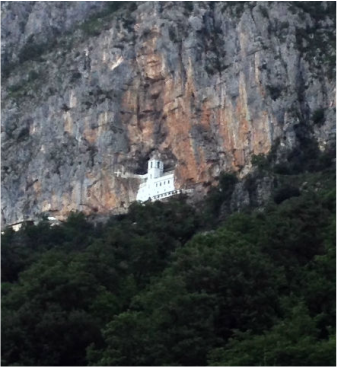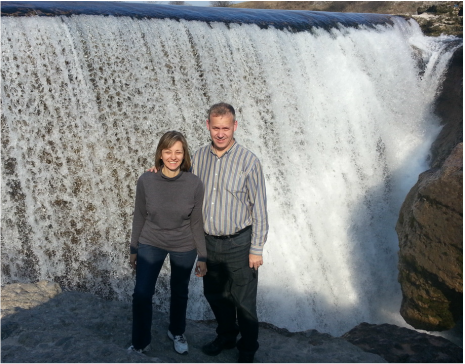 We have spent most of our time on this trip in cities, specifically university towns (which are also often capital cities, such as Minsk, Beirut, Sofia, Bucharest, Sarajevo, Chisinau), and while the architecture and civic art of these cities can be beautiful and striking, these cities are rarely tourist destinations because of their scenic beauty, and that is not why we find ourselves there. But our time in Montenegro (March 16-22) was different. We were headed to Montenegro not to encourage the local IFES work there, but to attend a staff consultation at which we would be teaching and training. Bar, Montenegro was picked because it was on the Adriatic, a picturesque spot, and the hotel owner was supportive of the student ministry and offered a great rate for the 50 staff and family members who attended the three-day event. While we offered teaching (on leadership development, women’s leadership development, and avoiding or dealing with burnout), the consultation was meant to offer refreshment for staff, with large gaps of free time and opportunities to connect with other staff from around the Balkan region of South Eastern Europe. But since we were coming to Bar, and had a few days between our last day in Belarus and the beginning of the conference, we did connect with people doing ministry in Montenegro, and I taught a “Situational Leadership” session for students and professionals in Podgoritca, and I led a leadership Bible study for 20 students and staff at the local IFES office near the university campus. A good gathering for a fledgling IFES group.  But along the way from our airport arrival in Podgoritca to our hotel in Bar for the staff conference, we had time to take in some of the natural beauty of Montenegro. The story our host told us as we arrived was that God said to Montenegro as he was creating the world, “You can have the most beautiful country in Europe, but you have to take all the left-over rock.” After just a few days in Montenegro, we could see why. The picture of us in front of a waterfall was taken about an hour after we entered Montenegro, at a place called “Niagara” for obvious reasons (though perhaps it should be called “Niagarita” or the Montenegran equivalent of “Little Niagara”). Then, after our day in Podgoritca, we traveled north. Along the way, we stopped by Ostrog Monastery, built into the side of the rocky mountain. This was one of dozens of monasteries built on high places we’ve seen in this part of the world, but it was unique in that it seemed, as we approached it from a distance, to be nestled between heaven and earth, as the travel blog cited above indicates. As we approached and walked around, it was clear why the 17th century monastery was built in this spot, a place where earthly concerns could give way to heavenly divine meditations. Finally, we took the coastal route to Bar, and passed by Kotor, an ancient and beautiful coastal town with not one, not two, but three monasteries located there, one built into the rock up the mountain, and two on twin islands in the middle of the bay on the Adriatic Sea. While there, we had lunch with some folks doing church planting there, and I had a conversation with a young man who had come from Minsk to work in the new church effort. Lisa and I had come from Belarus to Montenegro, so we were telling him of our visit to Belarus. He asked us, “Did you visit Gomel?” We had to acknowledge that we visited six different university towns in Belarus, but Gomel was not one of them. He said, “Oh, Gomel is the most beautiful city! You must visit it!” It did strike me as funny, because here we were in Kotor, nestled between mountains and sea, amid old world charm and modern seaside resort hotels, and he was saying that Gomel is beautiful, in a country that has no mountains and no coastline. I said to our friend, “Would you say it is as beautiful, or more beautiful, than Kotor?” To which he acknowledged that while Gomel had neither mountains nor coastline, it was still quite beautiful. I enjoyed hearing this forlorn Belarussian wax eloquent of his home, while living in what had to be a ranking global leader for natural beauty, and has been acknowledged as such by multiple sets of monastic pilgrims (two Orthodox, one Catholic) over the centuries.
0 Comments
Leave a Reply. |
Archives
April 2024
AuthorRich and Lisa Lamb Categories |
 RSS Feed
RSS Feed